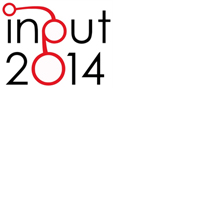Ontologies and Methods of Qualitative Research in Urban Planning
Abstract
Qualitative research can produce vast amounts of data and uses analytical categories to describe and explain social phenomena; several software packages are designed for qualitative data analysis and enable a complex organization of data. The study tests the capacity of new technology to build a formal ontology from qualitative data, in urban planning.
Downloads
References
Coppola, L. (2011), Il trattamento dei dati nella ricerca qualitativa tra vincoli e opportunità, Università degli Studi di Salerno, pdf on website.
Bazeley, P., Jackson, K. (2013), Qualitative Data Analysis with NVivo, London, SAGE Publications.
Rabino, G., Caglioni, M. (2009a), Planning, complexity and new ICT, Alinea, Firenze.
Rabino, G., Caglioni, M. (2009b) “Qualitive methods in goegraphy and planning”, in F. Bavaud, C. Mager (eds.), Handbok of theoretical and quantitative geography, University of Lausanne Press, 403-429.
Rabino, G., Scarlatti, F. (2006), “Statistiche testuali, mappe concettuali, reti bayesiane”, IN S. Moroni, D. Patassini (eds.), Problemi valutativi nel governo del territorio e dell'ambiente, FrancoAngeli, Milano, 180-203.

Copyright (c) 2014 Tema. Journal of Land Use, Mobility and Environment

This work is licensed under a Creative Commons Attribution 4.0 International License.
Authors who publish in this journal agree to the following:
1. Authors retain the rights to their work and give in to the journal the right of first publication of the work simultaneously licensed under a Creative Commons License - Attribution that allows others to share the work indicating the authorship and the initial publication in this journal.
2. Authors can adhere to other agreements of non-exclusive license for the distribution of the published version of the work (ex. To deposit it in an institutional repository or to publish it in a monography), provided to indicate that the document was first published in this journal.
3. Authors can distribute their work online (ex. In institutional repositories or in their website) prior to and during the submission process, as it can lead to productive exchanges and it can increase the quotations of the published work (See The Effect of Open Access)
